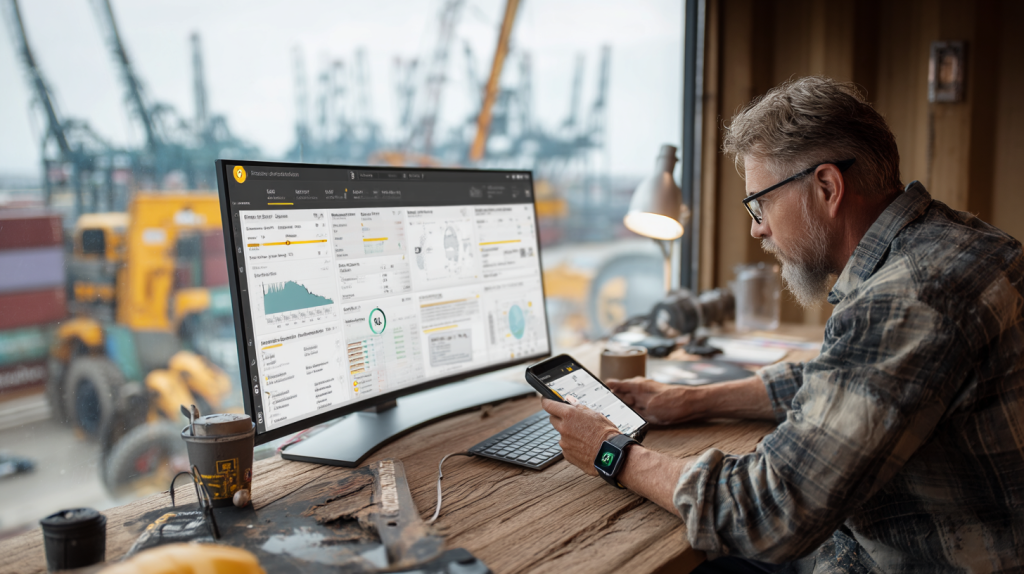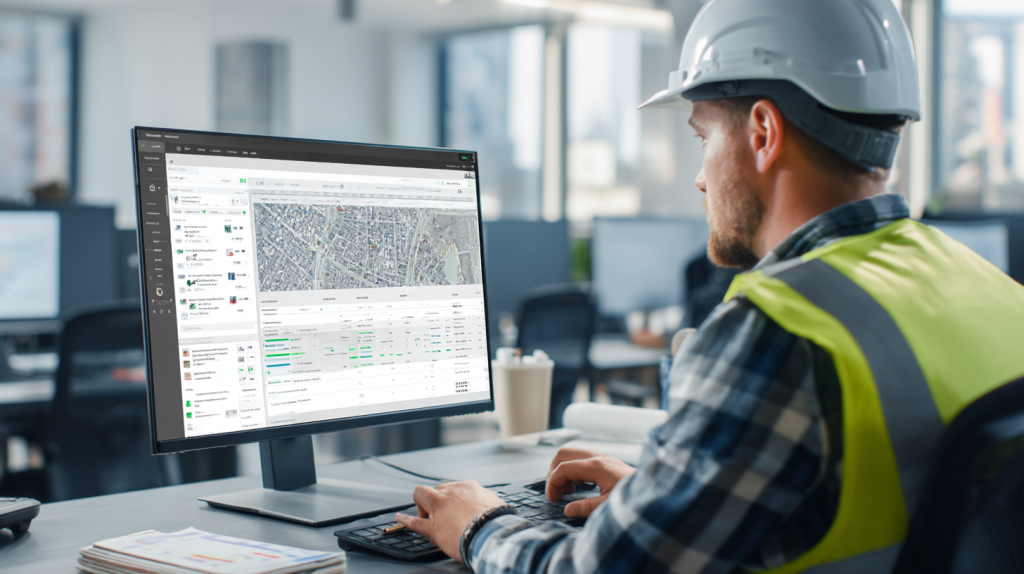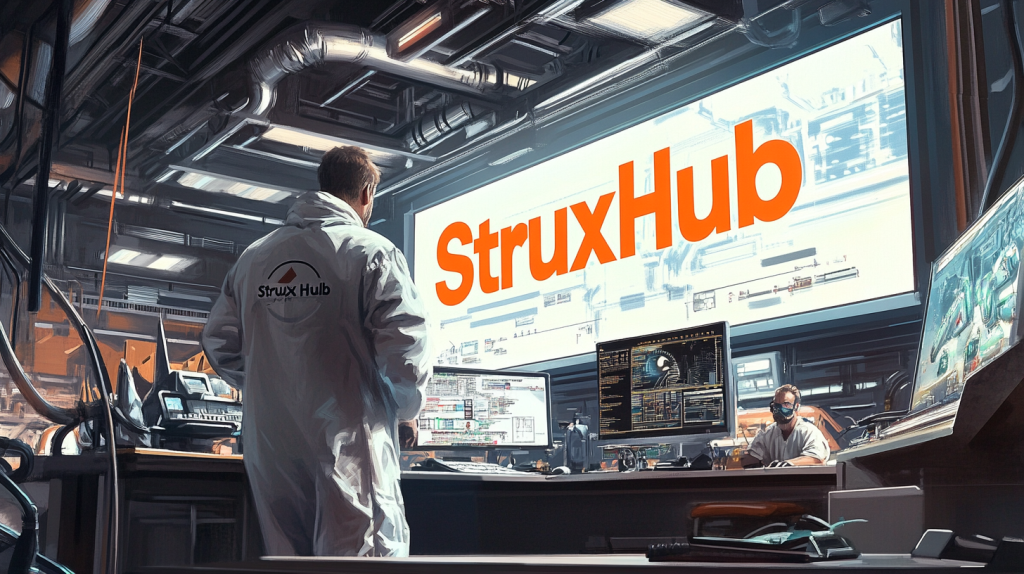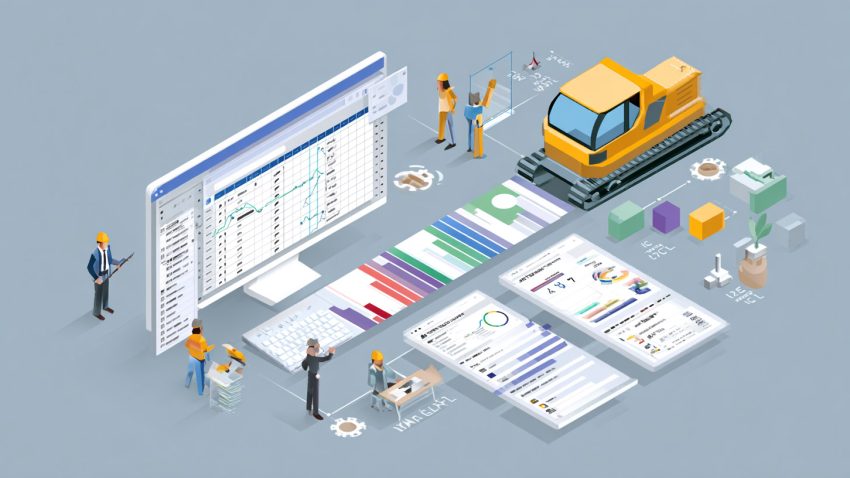Best Procurement Management Software for Construction: Faster Bids and Better Materials Management
Table of Contents:

Procurement delays are one of the most common—and costly—sources of project disruption in construction. Whether it’s a hold-up with vendor quotes, unclear lead times, or missing approvals, the ripple effect of a slow procurement process can throw off your entire schedule. For general contractors and superintendents, having the right procurement management software isn’t just helpful—it’s essential to keeping projects on track, within budget, and compliant with specs.
Modern procurement software solves these challenges by giving teams real-time visibility into materials, vendor quotes, purchase approvals, and delivery tracking. From bid requests to final delivery, these tools centralize the procurement lifecycle and make it easier for field and office teams to stay aligned.
This article breaks down what features to look for in procurement software, how it affects bid speed and materials management, and why the right platform can eliminate communication gaps between field teams, project managers, and vendors.
What Should You Look for in Construction Procurement Software?
Not all procurement software is built for the construction industry. Many tools are adapted from general supply chain platforms, which don’t always align with how superintendents and PMs actually source materials, coordinate with vendors, and handle approvals in the field. That’s why it’s critical to choose software built for real-world construction workflows.
Your procurement tool should help you send bid requests faster, track responses, issue POs, monitor material status, and document every step. The best platforms also integrate with your existing job costing, scheduling, and project management tools to keep everyone on the same page. It should reduce paperwork—not add to it—and give both field and office teams access to up-to-date procurement data without needing spreadsheets or email threads.
Top Benefits
- Faster vendor communication and quote collection
Good software allows you to issue bid requests to multiple vendors at once and compare quotes quickly—cutting days off your bidding timeline. - Full visibility into procurement status
Field teams and PMs can track materials from request to delivery, preventing miscommunication and site delays. - Better documentation and audit trails
Every bid, PO, change order, and delivery update is logged—reducing risk and making project closeout easier.
Best Practices
- Choose platforms built specifically for construction
Avoid generic ERP systems. Look for solutions that understand subcontractor bids, unit pricing, spec matching, and lead times. - Ensure field accessibility and mobile usability
Superintendents need to check material status and delivery timelines from the jobsite—not just the trailer. - Integrate with your cost and scheduling tools
Procurement software should connect with your job costing system and schedule so you can plan accurately and control expenses.
If your procurement system fits how your team actually works, it will speed up every phase—from bidding to buyout to delivery.
Faster Procurement Means Better Project Control
Construction schedules are only as strong as the materials that support them. No matter how well a project is planned, if the right materials don’t arrive on time—or at all—everything slows down. That’s why procurement speed is directly tied to project control.
Faster procurement allows GCs and supers to lock in pricing earlier, avoid last-minute vendor changes, and build in buffer time for long-lead items. It also empowers teams to respond faster to change orders or design revisions—without derailing progress. In large projects, the difference between a two-day and a ten-day procurement turnaround can mean the difference between on-time and over-budget.
With the right software, procurement becomes proactive. You can forecast demand, align orders with build phases, and ensure that crews aren’t waiting for the materials they need. This shift reduces stress on field teams and builds trust with clients and subs.
Top Benefits
- Reduced delays from missing or late materials
Real-time tracking and alerts help PMs and field staff know when to expect critical deliveries—so they can plan around them. - Improved vendor reliability and accountability
A centralized system allows you to compare vendor response times and track performance over time. - Faster responses to scope changes
When a new material is needed, teams can issue bid requests and get updated quotes without slowing down the job.
Best Practices
- Use procurement data to inform scheduling
Build procurement timelines into your project schedule so you can better align field work with material readiness. - Track vendor performance over multiple projects
Keep tabs on who delivers on time, who offers consistent pricing, and who’s slow to respond—then adjust your vendor list accordingly. - Create procurement workflows with built-in approval gates
Set clear rules for who can issue POs, approve vendors, and confirm deliveries to avoid costly errors or missed steps.
Faster procurement is a competitive advantage. When you can move quickly and confidently, you keep your build on pace and your team focused on execution.
Related Articles:
Best Guide to Construction Management Software
Superintendents: Effective Training Strategies for Construction Management Software Users
The Best Guide to Delivery Management Systems (DMS) for Commercial Construction

How Does Procurement Software Help With Material Tracking in the Field?
Procurement doesn’t end when the PO is issued—it ends when the right materials arrive at the right time and place. Material tracking is one of the most important functions of construction procurement software, especially for superintendents managing complex jobsite deliveries.
The best platforms let your team monitor delivery dates, match materials to schedule phases, and document received items with photos and packing slips. This visibility ensures that no one’s guessing when a shipment will arrive—or worse, discovering too late that something didn’t show up at all.
Field teams can also use procurement tools to verify materials upon delivery, mark damaged or missing items, and trigger follow-up steps automatically. This not only prevents rework and frustration, but also supports more accurate billing, forecasting, and jobsite coordination.
Top Benefits
- Real-time material status updates
Everyone on the project—office and field—knows what’s on order, what’s in transit, and what’s arrived. - Less rework due to incorrect or missing items
Teams can flag delivery issues immediately, reducing the risk of delays or incorrect installations. - Improved jobsite planning and storage
When you know exactly when materials will arrive, you can prepare the site, manage storage, and avoid clutter or waste.
Best Practices
- Equip field teams with mobile delivery checklists
Make it easy for crews to verify received materials, upload photos, and note exceptions directly from their phone or tablet. - Link material tracking to schedule phases
Assign materials to specific schedule tasks or areas so the field team knows where they’re going and when they’re needed. - Use alerts to catch late or incomplete deliveries
Automatic notifications help teams react quickly and contact vendors before small issues become major problems.
Accurate material tracking keeps your field teams focused and your schedule on course—making your procurement process work all the way through to installation.
How Does Procurement Software Improve Vendor Management?
Vendor relationships can make or break your procurement process. Late responses, inconsistent pricing, and unclear communication can lead to costly mistakes and schedule disruptions. Construction procurement software helps mitigate these risks by giving teams a structured, transparent way to manage vendors—from initial bids to final deliveries.
With the right software, you can send bid packages to multiple vendors, compare responses side-by-side, and document all communication in one place. Over time, this data becomes a valuable reference that helps project managers and estimators choose vendors based on performance, reliability, and pricing trends—not just gut feel.
Many tools also allow you to create preferred vendor lists, track certifications, and monitor compliance with insurance or safety requirements. This reduces administrative overhead and gives you a consistent pool of trusted partners to work with across multiple projects.
Top Benefits
- More competitive and faster bid responses
Automated bid requests and centralized quote tracking speed up vendor selection and improve pricing visibility. - Better vendor accountability
With audit trails and performance history, you can easily identify which vendors deliver on time and which ones fall short. - Simplified compliance and prequalification
Keep track of licenses, W-9s, COIs, and other required documents so you’re always ready to onboard new vendors or satisfy audit requirements.
Best Practices
- Standardize your bid templates
Use consistent bid packages and requirements to reduce back-and-forth and improve quote accuracy. - Track vendor response time and pricing trends
Keep a record of how long vendors take to reply and how competitive their quotes are over time. - Create vendor scorecards based on past projects
Rate vendors on delivery speed, accuracy, price competitiveness, and communication—then use this to inform future selections.
Effective vendor management leads to better procurement outcomes. When your system supports vendor selection and accountability, the rest of your project benefits.
What Role Does Procurement Software Play in Budget Control?
Every procurement decision has a direct impact on project costs. Without visibility into quotes, orders, and delivery timelines, teams often overspend—or worse, duplicate orders and waste materials. Procurement software helps construction teams avoid these pitfalls by connecting procurement data to budget tracking in real time.
Instead of relying on separate spreadsheets or email threads, your team can see exactly what’s been ordered, what’s been approved, and how it aligns with the original budget. Many platforms allow PMs to view committed costs, pending approvals, and actuals side by side—making it easier to catch overruns before they spiral.
Some systems also integrate with job costing tools, allowing you to assign materials to cost codes and track spend against budget categories. This reduces the risk of invoice surprises and makes it easier to communicate cost implications to owners, execs, and accountants.
Top Benefits
- Real-time budget tracking and cost transparency
Procurement tools show what’s committed, what’s spent, and what’s pending—all in one view. - Reduced financial surprises and invoice errors
Approved POs and bid documents provide a clear audit trail for vendor billing, preventing cost disputes. - Better alignment between procurement and accounting
Integrated systems reduce manual entry and ensure your finance team is working with the latest project data.
Best Practices
- Assign cost codes at the time of PO creation
Tagging orders with the right codes upfront helps your accounting team reconcile budgets faster. - Use procurement reports to forecast cash flow
View upcoming orders and expected deliveries to plan vendor payments and manage cash proactively. - Set up alerts for over-budget items or change orders
Real-time warnings let PMs approve or reject purchases that could exceed the allocated budget.
Procurement is directly tied to profitability. The right tools help you manage spend with precision—not guesswork.
How Can Procurement Tools Support Compliance and Documentation?
Documentation isn’t just about paperwork—it’s a protective layer for your project. From contract compliance to warranty validation, well-documented procurement ensures your team stays covered if something goes wrong. Procurement software simplifies this by automatically logging every step of the purchasing process and providing easy access to records when you need them.
Every bid request, vendor response, PO approval, and delivery confirmation becomes part of a searchable history. If an owner asks why a material was selected, or a vendor disputes pricing, you can pull up the entire chain of events in seconds. This transparency also improves collaboration and reduces finger-pointing when issues arise.
Many tools also support compliance tracking—ensuring you only buy from qualified vendors, stay on top of insurance renewals, and meet internal audit standards. With less reliance on email or paper trails, teams can focus on building, not chasing down missing documents.
Top Benefits
- Faster resolution of disputes and claims
Complete procurement records allow you to respond to RFIs, legal questions, or owner concerns with confidence. - Improved team accountability
With centralized logs, it’s easy to see who approved what and when—keeping everyone aligned and responsible. - Simplified audits and closeout documentation
Procurement histories become a ready-made trail for project handoff, warranty support, and compliance verification.
Best Practices
- Use consistent naming conventions and PO numbers
Standardized records make it easier to search and track across systems. - Attach supporting docs directly to line items
Link specs, cut sheets, and compliance forms to the related PO or material for easy reference. - Regularly back up and review procurement logs
Keep digital copies in multiple locations and use periodic reviews to catch gaps or inconsistencies.
Good documentation protects your team, your budget, and your reputation. With the right tools, it happens automatically—instead of after the fact.

How StruxHub Enhances Procurement Communication and Field Visibility
StruxHub bridges the communication gap between procurement and field execution. While it’s not a procurement software platform itself, it plays a critical role in helping general contractors, superintendents, and project managers keep procurement tasks aligned with day-to-day jobsite operations.
Often, materials get ordered—but no one on-site knows when they’re arriving, where they go, or who approved them. That’s where StruxHub comes in. It gives your team a centralized place to share delivery updates, attach spec sheets, log delivery confirmations, and assign material-related tasks—all tied to the live progress of the project.
By keeping field and office teams in sync, StruxHub ensures that procurement doesn’t just happen in the background—it becomes an active, visible part of the build process. And when issues come up—like missing items or last-minute changes—everyone can respond quickly, without digging through email chains or spreadsheets.
Top Benefits
- Clear delivery visibility for field teams
Superintendents can see what materials are arriving, when, and where they belong—no extra calls or confusion. - Real-time updates for procurement-sensitive tasks
If a change order affects material needs, teams can adjust quickly and communicate it across departments. - Linked documentation and task management
Delivery confirmations, photos, and packing slips stay connected to the job phase and trade responsible—reducing miscommunication.
Best Practices
- Tag tasks or updates by procurement milestone
Use labels like “Awaiting Delivery” or “Material Verified” to keep everyone aware of what’s pending or complete. - Encourage field teams to log material conditions
Notes, photos, or status updates help the office respond to issues faster. - Sync procurement updates with project status check-ins
Add a StruxHub task review during weekly meetings to catch any procurement-related blockers early.
StruxHub doesn’t replace your procurement tools—it makes them more actionable. When everyone knows what’s coming, what’s missing, and who’s accountable, your project flows more smoothly from start to finish.

StruxHub
Experience the power of StruxHub today and witness firsthand how it can revolutionize your construction operations.
FAQ
What is the best procurement software for construction companies?
The best procurement software depends on your company size, project volume, and specific needs. For small to mid-sized firms, tools like Buildertrend or Procore’s procurement module offer simple, integrated features. Larger GCs may benefit from more robust systems like Oracle Primavera Unifier or Autodesk Build. Look for software with features tailored to construction: vendor bidding, PO creation, delivery tracking, and integration with your scheduling and financial tools.Choosing the right procurement software hinges on your company’s size and project complexity.
Smaller firms often benefit from user-friendly, integrated options like Buildertrend or Procore, which simplify tasks such as managing vendors, RFQs, and POs, while connecting procurement with other project aspects. Larger contractors tackling complex projects with high procurement volumes might find enterprise-level systems like Oracle Primavera Unifier or Autodesk Build more suitable due to their advanced bidding workflows, contract management, and integration with ERP and accounting systems. The ideal software, regardless of size, will offer industry-specific features such as vendor bidding tools, PO tracking, delivery monitoring, seamless integration with existing software, robust reporting, and mobile access.
How does procurement software help reduce delays?
Procurement delays often stem from manual workflows, email-based communication, or lost documentation. Modern software eliminates these issues by automating bid requests, centralizing approvals, and providing real-time delivery tracking. When the entire team has visibility into material status and procurement timelines, they can plan work more accurately and avoid downtime caused by missing or late materials.Construction procurement software minimizes project delays by automating RFQs, centralizing communication, streamlining approvals, and providing real-time visibility into material status and deliveries. This proactive approach allows for better planning, reduces inefficiencies associated with manual processes, and helps avoid costly downtime.
Can procurement tools track vendor performance?
Yes. Many platforms include vendor tracking features that log past quotes, delivery reliability, pricing competitiveness, and more. Over time, this data helps project managers and purchasing agents make better decisions about which vendors to use. Some tools also allow for vendor scorecards or performance ratings based on KPIs like response time and delivery accuracy.Construction procurement management software often integrates robust vendor tracking functionalities. These features go beyond simply listing suppliers, creating a detailed historical record of each vendor’s interactions. The system logs crucial information such as previously submitted quotes, ensuring easy access to past pricing and bid competitiveness. Furthermore, it tracks delivery reliability, providing insights into a vendor’s consistency in meeting deadlines, which is critical for maintaining project schedules.
Beyond basic tracking, many platforms also incorporate tools for evaluating vendor performance more comprehensively. Some offer vendor scorecards, where key performance indicators (KPIs) like response time to inquiries, adherence to delivery schedules, the quality of materials supplied, and even adherence to safety regulations can be monitored and rated. These ratings provide a data-driven basis for assessing vendor suitability for future projects.
The accumulation of this detailed vendor data over time provides significant benefits. Project managers and purchasing agents can leverage this historical information to make more informed and strategic decisions regarding vendor selection. Identifying reliable, competitive, and high-performing vendors becomes easier, reducing the risks associated with material procurement. This ultimately contributes to more efficient project execution, cost control, and improved overall project outcomes. Moreover, the transparency provided by these tracking and evaluation features can foster stronger, more collaborative relationships with reliable vendors.
How does procurement software integrate with my current systems?
Leading construction procurement tools offer integrations with project management systems (like Procore or Buildertrend), accounting tools (like QuickBooks or Sage), and scheduling platforms. These integrations reduce double entry and ensure that procurement data flows across departments. Ask vendors if they support native integrations, open APIs, or third-party sync tools like Zapier.
What makes StruxHub valuable for procurement workflows?
StruxHub enhances procurement visibility by ensuring field and office teams stay in sync. It helps superintendents track deliveries, log issues, and assign material-related tasks while keeping procurement communication clear and centralized. While it’s not a procurement platform, it complements your existing tools by adding structure and accountability to the execution side of material management.




